Features of planting carrots in open ground
Planting carrots in open ground is a process with a number of features, if followed, you will get a rich harvest. It is worth planting carrots in open ground taking into account its requirements, performing preparatory work, processing the soil and seeds, choosing a place for growing and caring for the sprouts.
- Preparatory work
- Choosing a landing site
- The soil
- Site preparation for planting
- Growing
- Preparing seeds for planting
- Seed treatment
- Growing conditions
- Temperature
- Landing methods and schemes
- Sowing rules
- Shelter
- Landing dates
- Early varieties
- Mid-season varieties
- Late varieties
- Weather
- Features of the region
- Lunar landing
- Landing for the winter
- Seedling care
- Watering
- Fertilizers
- Planting carrots for seeds
- Landing
- Fertilizers
- Care
- Seed collection
- Diseases and pests
- Conclusion
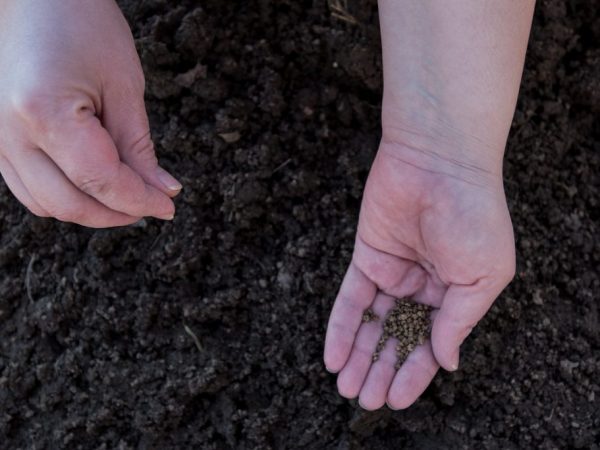
Features of planting carrots in open ground
Preparatory work
Sowing carrots will give a rich harvest when all the preparatory work is done.
Choosing a landing site
Good precursors for planting carrots are:
- cabbage;
- potatoes;
- tomatoes;
- bow;
- garlic;
- beans, cereals;
- cucumbers;
- zucchini.
You should not plant carrots after such predecessors:
- dill;
- celery;
- parsley;
- coriander;
- parsnip;
- fennel;
- caraway.
Carrots are not planted in the same place every year, it is dangerous for them with pests and diseases. The next sowing in open ground is done at intervals of 3-4 years from the moment of harvest.
The soil
Carrots are best sown in soil with the following characteristics:
- loose and fertile;
- in composition, medium loams and sandy loam soil are suitable;
- pH 6-7;
- no crust formation, good moisture holding capacity.
Planting seeds in dense and heavy soil will yield a vegetable with poor taste, as it does not allow air to pass through well and retains moisture. Lightweight soil is suitable for planting in the fall. The soil of poor composition has a negative effect on seed germination in spring, adult bushes will be susceptible to disease.
Correct planting of carrots implies the introduction of the following components into the garden:
- rotted manure or compost - half a bucket per m²;
- sawdust - 2-3 liters for heavy earth;
- wood ash;
- other elements containing potassium.
Site preparation for planting
For planting carrots in the spring in open ground, the site is dug up in the autumn. The soil has time to settle. To obtain even fruits, you need a deep digging, for 1.5 bayonets of a shovel. During pre-sowing preparation, fresh manure is not used, it provokes flowering of bushes and branching of fruits.
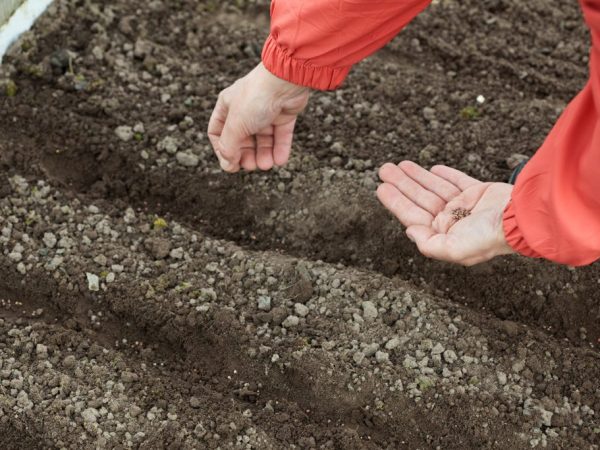
Pre-prepare the garden
Growing
Preparing seeds for planting
More often carrots are planted in spring, planting is carried out by seeds in open ground. Correct seed preparation:
- they are soaked for a couple of hours in water at room temperature;
- laid out on a damp cloth, covered with another damp cloth on top;
- seeds are left at home in a room, occasionally mixed;
- if the fabric dries up, it is soaked;
- when the seeds swell and begin to hatch, they are placed in a refrigerator for 10 days for hardening.
At home, seed preparation involves natural selection, sprouted carrots are planted after hardening.
When planting, seeds are also used in the form of pills. It is convenient to germinate gel pills pointwise, the seedlings are strong.
Carrots are grown through seedlings, this method will allow you to get an early harvest compared to the traditional method of planting. It will be possible to germinate seeds using containers for eggs, eggshells, cells from candy boxes.
Seed treatment
The seeds will quickly take root when extreme conditions are created for them, boiling water is used for this. The seeds are placed in small portions in rag bags and immersed in water heated to 50 ° C for several minutes, after which they are doused with cold water for contrast. The procedure is allowed to be repeated several times. The seeds are taken out, dried and sown in open ground.
Growing conditions
It is better to sow carrots in well-lit areas. Her bushes do not like shade. With a lack of lighting, the yield and taste of vegetables decrease, the fruits grow small.
Temperature
For planting an orange root crop, the temperature at night is 7-9 ° C, in the daytime 15-18 ° C.
Landing methods and schemes
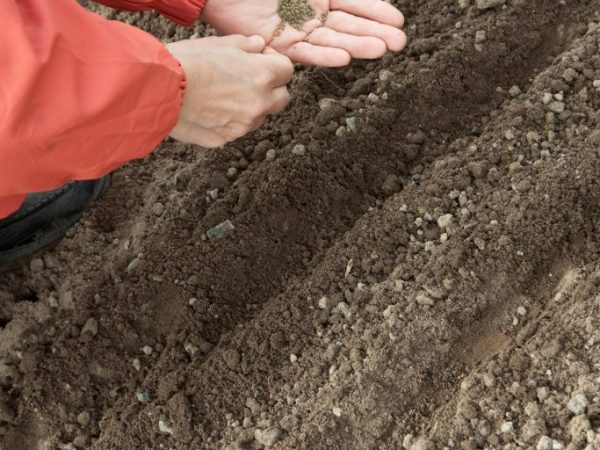
We make rows and fall asleep seeds
To date, various simple ways are known, with the help of which carrots are planted.
Disembarkation
Dry carrot seeds should be buried in pre-prepared furrows. This method has a drawback - prolonged germination of seedlings and uneven distribution of crops.
Wet seeds
After soaking and aging in a humid environment, the seeds are placed on the beds in the furrows. They require regular watering, otherwise the seeds will dry out.
Mixed with sand
Method - planting carrots with stirring in a proportion of 30 g of seeds per 1 liter of sand. Mixed seeds with sand are sown in the furrows on the plot. Abundant watering is provided.
Using toilet paper or tape
The next simple method is tape planting of carrots, in which the seed tape is moistened with adhesive. To do this, 20 g of starch should be mixed with 200 ml of water. The seeds on the tape are located evenly and at a certain distance. The tape is placed on the garden bed and covered with soil. The method has the advantage of planting seeds quickly and evenly. The method is used when planting carrots in a greenhouse, germination will be fast while ensuring abundant watering.
In granules
This is the most modern method of planting carrots today.
The secrets to the popularity of its use lie in the benefits:
- seeds in granules are convenient to use;
- the granules are large, bright, this makes the sowing process easy;
- 100% germination.
When sowing, the granules are placed at a distance of 5 cm from each other in the furrows, sprinkled with sand on top and provide abundant watering.
With other vegetables
Correctly planting carrots will turn out together with other vegetables: beets, onions, garlic. Planting is carried out at a distance of 5-7 cm from each other in furrows at a depth of 2-3 cm.
In egg cells
In egg trays, the bottom is cut off, this is done for the development of the carrot root system. Egg cells are placed in furrows 10 cm wide, 1-2 seeds are planted in each tray, covered with soil and provided with abundant watering.
The positive side of the method is that the tray prevents weeds from growing and retains moisture in the soil. Plastic and cardboard cells are used.
Line
Planting with a stitch along the ridge of a row is a more convenient method than planting on a flat bed. If the carrots are planted on the ridges, this creates a convenient environment for thinning. The disadvantage of this method is the flow of water from the ridge, inconvenience in feeding and loosening.
With coffee
When sowing seeds, use dried coffee grounds. Seeds are mixed with it, and the resulting mixture is sown. Seeds are sown less often, a good effect is obtained with thinning. The smell of coffee repels pests and parasites.
With jelly
In the cooled jelly (200 ml), 5 g of seeds are distributed, thoroughly mixed. The resulting liquid is poured into a kettle for the convenience of planting seeds. Kissel is poured into the furrows, the seeds do not stick to each other. The furrows are covered with earth.
Homemade gadgets
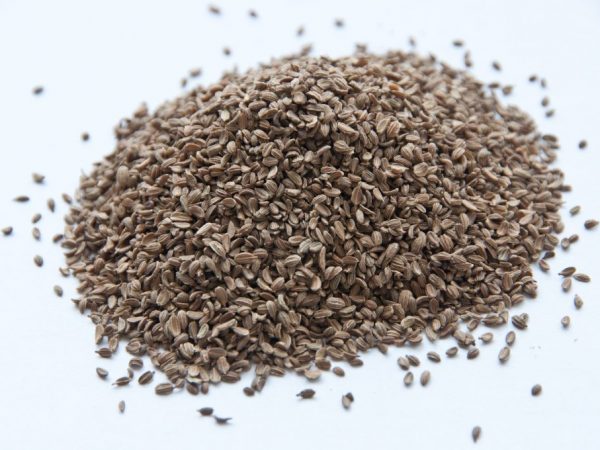
Planting seeds is not difficult at all
For planting a large number of seeds, a home-made machine, seeders, and a toothed rack are used.
An unconventional method is the use of a device for sowing, for the manufacture of which it is worth preparing a drawing and choosing materials. The device can be made if there is a rail made of wood 40-50 mm wide and 15-18 mm thick. The length of the slat should be equal to the width of the bed. Holes with a diameter of 9 mm are drilled in the center of the rail. The distance between the holes is about 15 cm. At the ends of the rail, nuts are fixed on a pin with a diameter of 5-6 mm. 2 pushers 70-80 mm long are made from a rod with a diameter of 8 mm. A ring with a screw is attached to the pusher rod. The mechanisms for moving the ring allow you to set the depth to which the seeds will be buried.
The gadgets have some tricks to use:
- seeds are distributed evenly;
- planted at the same depth;
- exact distance between landings;
- simplicity;
- easy creation.
Markers
Seeds are planted with a marker.
To make it you will need:
- a board with a width of 20 cm, a thickness of 3-4 cm, a length - along the width of the bed;
- holes are made in it at a distance of 6 cm in a row from each other;
- sharp wooden wedges 5–6 cm long are inserted into them;
- a rake is obtained, with the help of which rows of holes are obtained.
The marker is used when growing carrots, it is used when planting radishes, onions, garlic.
Syringe for planting
Small seeds are planted with a syringe. The planting material is poured into the flask.
By pressing the plunger of the syringe, the seeds fall on the bed. The germination pattern will be uniform if the seeds are placed in the soil at the same depth.
Sowing rules
In the spring planting process, there are rules to follow. Any method is allowed to choose, but planting with a tape is considered the best way. The planting seeds are laid out on one side of the sticky tape, 2-3 cm apart.
A dense planting requires more thinning. It is necessary to plant carrots in spring to a depth of 1.5-2 cm. Before sowing, the soil is watered with hot water and sprinkled with wood ash. A ribbon with seeds is placed on top. The distance between the furrows is kept about 20 cm.
From above, the planting seeds are sprinkled with soil and pressed with the palm of your hand. It is worth planting carrots in warm sunny weather, without wind.
Shelter
Germination of seeds in the garden is accelerated with the help of a shelter. For this, plastic wrap or agrofibre is used. After the sprouts appear, the shelter is removed, otherwise they begin to rot.
Landing dates
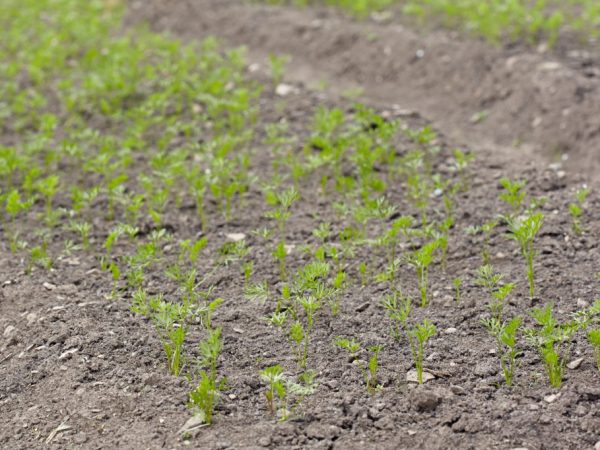
Seeds sprout well in warm weather
It is worth planting carrots with seeds in open ground under certain weather conditions.
The timing of sowing seeds for early, mid-ripening and late-ripening carrot varieties will differ.
Early varieties
Sowing of seeds of early varieties of carrots is carried out after the arrival of true heat, after the cessation of night frosts. Planting carrots in open ground is allowed in the middle lane in mid-late April. The first harvest of carrots is summer, in late June - early July, since the ripening period is 60-80 days.
Mid-season varieties
Mid-season varieties are well stored, they are grown in regions where there is a short period of the warm season. 80-120 days after sowing carrot seeds, the first crop is harvested. If you plant vegetable seeds in Siberia in the spring month, at the end of May, you will get the harvest in mid-September. The growing season coincides with the warm time in the specified part of Russia. In warm regions, sowing dates are shifted to early to mid-May. The variety has been grown in the Donetsk region since May.
Late varieties
Late varieties are suitable for long-term storage.Growing late varieties is obtained by sowing seeds in the summer, at the beginning of June, the harvest falls in October. The growing season is 120-150 days.
Weather
Weather conditions are important when landing. Studying the characteristics of the variety will help to effectively sow it. Frost-resistant varieties are planted if the temperature at night does not fall below 0 ° C and 5 days have passed since the last frost. Otherwise, the earth does not have time to warm up. Frost-resistant varieties can withstand temperatures down to -5 ° C or more, but such loads negatively affect germination.
Before planting, the seeds are soaked in an aqueous solution of growth stimulant and wood ash.
Features of the region
In the central regions of Russia and in the Moscow region, carrots are planted after April 20, since frosts at night return until early May. Sowing carrots in the Urals, in the Leningrad region and other northern regions of Russia is carried out after May 10. Planting a vegetable in Siberia falls at the end of May. The term for planting a vegetable crop in the Kuban falls on the period from February 20 to March 20, it is allowed to plant it in cold soil.
It is better to focus on the carrot variety and its resistance to cold. Special varieties are sown in Siberia at the end of April, in Ukraine and southern regions of Russia, it will be possible to grow when sowing in early April, the soil warms up to 5-7 ° C.
Lunar landing
Planting carrots in the open ground in spring is associated with the dates of the lunar calendar.
Suitable numbers in 2018:
- March - from 19 to 24, 27, 28;
- April - 1, 13, 16, 17, 18, 23, 27, 28;
- May - 4, 7, 9, 15, 19, 24;
- June - from 4 to 8, 18, 19; 20 (landing in a snail).
Planting carrots with seeds in open ground will be successful if carried out on women's days of the week. Carrots are not planted during Palm week.
Landing for the winter
Good weather conditions are selected for planting for the winter. After planting, the site is covered, so the seeds are protected from freezing in winter. A plot on flat terrain is suitable. In the spring, the seeds germinate, harvesting takes place 2-3 weeks earlier than with conventional sowing. These vegetables are best eaten, they are poorly stored.
Seedling care
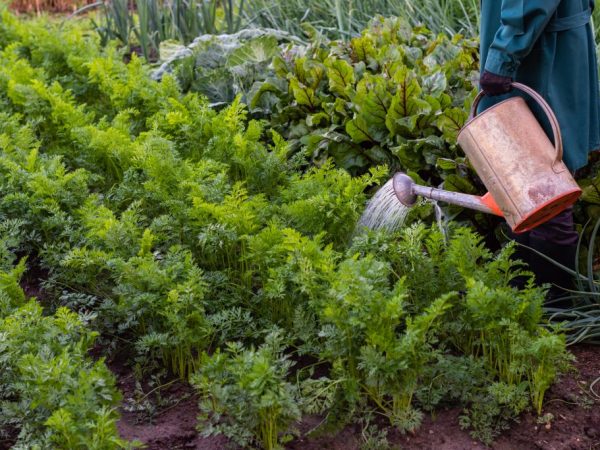
Field and water the carrots
Proper care is important for root crops. Seedlings need constant weeding, weeds negatively affect the yield of the root crop. Care is associated with weeding, they are carried out on a regular basis. To supply oxygen to the root system of the plant and prevent the formation of a dense crust on the surface of the site, the soil is loosened.
An important stage in the care of crops is seedling thinning. There should be a distance of 3-4 cm between the bushes.
With proper care, the yield is 20-100 t / ha.
Watering
Root crops need abundant watering. It is carried out every 5-7 days, if there is little moisture, the vegetables will turn out to be bitter and dry.
Fertilizers
After 21-28 days after the emergence of seedlings, vegetables must be treated with the first fertilizer, their second rate is applied after 45-60 days.
Root crops are fed with potassium chloride to reduce nitrates in them. For 10 liters of water, 15 g of fertilizer are sparingly applied.
Suitable fertilizers: nitrophoska; wood ash; potassium nitrate; superphosphate; urea.
Planting carrots for seeds
Good advice from gardeners allows you to get carrot seeds, for this, the largest root crop is left in the garden until frost. At the first frost, they dig it up, allow it to dry and cut off the tops, leave the stalk up to 3 cm and hide it in a cellar with a temperature of up to 0 ° C for the winter. Carrots are placed in a wooden box and sprinkled with dry sand.
Landing
At the beginning of spring, we bury it with a root crop in the soil, the cutting is sprinkled with humus from straw, this saves the stem from sunburn and freezing.
Fertilizers
Before planting, fertilizers are applied: a handful of humus and 5 g of granular superphosphate. Landing upright or tilted. The distance between the bushes is 40 cm, in the row spacing - 70 cm.
The soil should be loose and free of weeds.When testes appear, the soil is fertilized with substances with a nitrogen content - 10 g / m² of urea. The second feeding is carried out before flowering - 15 g of superphosphate and 10 g of potassium chloride per 1m².
Care
Near the planting site, where carrots grow for seeds, a fence is made, a support is placed, since the plant grows up to 1 meter.
When planting carrots growing on seeds, a rather large yellow umbrella is formed, it will attract bugs, bees and other insects for pollination.
If umbrellas appear after July 25, they are removed as they grow.
Umbrellas on the bush ripen at different times, they are harvested 4 times. Umbrellas with brown seeds are cut first.
Seed collection
If the seeds do not ripen after 2 cuts, no later than September 20, the plants are pulled out and ripen in a suspended state. Threshing is formed in manual mode, after grinding between palms or on a sieve. The seeds are sorted and hidden in a dry place for a new harvest in the future. The shelf life is 3-4 years.
Diseases and pests
For carrots, carrot fly and phomosis are dangerous.
Chemical preparations such as Actellik or Inta-vir help to fight the carrot fly. To combat phomosis, a 1% solution of Bordeaux liquid is used.
Conclusion
Compliance with all the requirements of the vegetable crop, the implementation of preparatory work, the preparation of seeds and soil, planting on the right dates and weather will allow you to plant carrots correctly and on time and get


